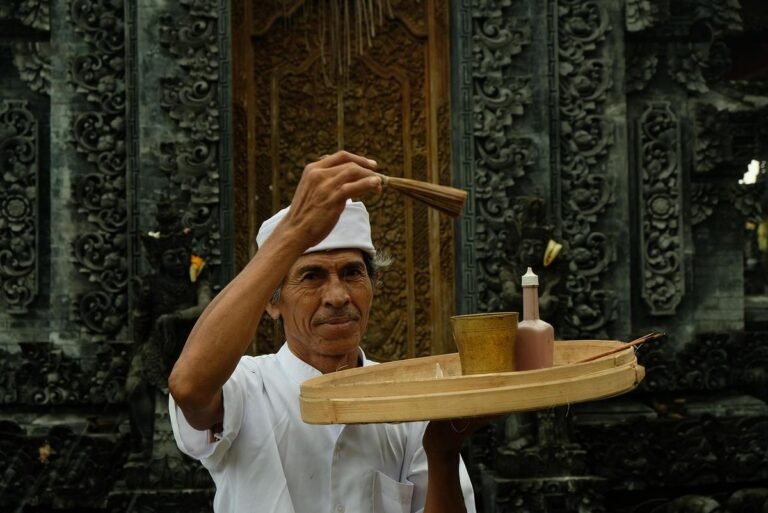Celuluk, the Bald Leak Demon, Paralyzes Bali Village with Fear
In a coastal hamlet on Bali’s shore, daily life revolves around spiritual traditions that stretch back centuries. Village ceremonies blend with simple tasks like cooking and weaving, all in an effort to honor unseen forces believed to guide each family. Elders share tales of friendly guardians and hostile entities, while small shrines stand outside every home, marking the boundary between the human and the spirit world. Residents see their surroundings as alive with energy, shaping both communal gatherings and private moments from dawn until nightfall.
One of the most chilling figures in local lore bears the name celuluk, often called the bald leak. Leak denotes black magic that lets someone transform into a monstrous form for evil ends. Celuluk ranks among the most feared of these shape-shifters, said to serve Rangda, the notorious witch-queen of Balinese myth. In hushed voices around evening fires, villagers pass on warnings of its hollow gaze and uncanny laughter, reminders that its arrival almost always portends disaster.
Descriptions of celuluk’s appearance leave little to the imagination. Hollow eye sockets stare from a skull-like face, and rows of jagged teeth jut forward. The forehead remains bare of hair, but a curtain of long locks hangs at the back. Noticeably elongated breasts droop under its shoulders, adding to its grotesque silhouette. When it emerges, people say it emits an uncanny cackle that echoes across the land. Each aspect of its visage seems crafted to sow terror, a clear mark of Rangda’s dark designs.
Legends place celuluk in specific spots on the island, especially beneath papaya trees locals call Gedang Renteng. Superstitions forbid planting these trees near a home, since sightings often happen nearby. Villagers believe a newly planted papaya could invite the leak, bringing misfortune to those close by. This caution has led many to remove or avoid these trees, keeping their dwellings clear of what they see as a dangerous refuge.
Storytellers claim the earth trembles before celuluk crawls into view, as though an unseen quake shakes the ground. After the rumbling subsides, the soil splits open and the bald leak crawls forth in a cloud of dust. Witnesses say its first gesture is a chilling laugh, sounding like dry twigs snapping in rapid sequence. It then lurches toward anyone who stands too near, making travel at night or in isolated fields a nerve-wracking ordeal.
Yet villagers insist the bald leak is not invulnerable. One method passed down by elders calls for stamping on its head as it breaks the surface. Tradition holds that the sudden force startles celuluk, driving it back into its underground lair. This booted defense is taught to both children and adults, serving as the first line of protection whenever fear takes hold.
A further tactic involves relieving oneself on the very spot where the leak appears, a crude practice believed to send it fleeing. If that proves ineffective, witnesses say striking the creature with a broom or a length of wood blessed by sacred prayers will often send it scurrying away. Celuluk recoils from objects touched by holy chants, retreating swiftly when confronted by anything imbued with those protective blessings.
In the hierarchy of leak beings, celuluk stands among the lower ranks, considered less potent than more powerful specters. Even so, it wields enough dark power to cause real harm for anyone caught unprepared. Villagers caution travelers and shepherds alike that no leak should be underestimated, since fear alone can give these spirits strength and turn a simple encounter into a dangerous event.
Custom dictates extra vigilance for anyone passing beneath a papaya bough after sunset. Whisperers claim that faint rustling in the leaves may signal celuluk’s approach. Families warn children to hurry through groves of Gedang Renteng, lest the leak finds them unguarded. In this way, a routine walk home after dark becomes an exercise in watchfulness, each shadow carrying the possibility of the creature’s threat.
Tales link celuluk to Sang Hyang Catur Buka, the deity who resides at crossroads and grants power to leak spirits. Locals say the blessings from this guardian enable the bald leak’s uncanny transformations. Yet even a gift from such a deity has its limits. Brave individuals skilled in ritual can drive the creature away with sacred chants and the proper implements. Those who master these rites gain the knowledge needed to shield their community from this specific menace.
Stories of celuluk reflect the Balinese sense that unseen forces shape the world around them, making respect for the spiritual realm essential. Through these narratives, elders teach younger generations the rites and precautions required to keep both realms in balance. As villages evolve and modern comforts arrive, accounts of the bald leak still surface during festivals and family gatherings. That survival of legend ensures celuluk remains more than a specter of fear—it stands as a symbol of the community’s resolve to guard against the darker currents flowing just beneath the surface.






